Powerful aftershocks rock Japan after New Year's Day earthquake kills 62
- Oops!Something went wrong.Please try again later.
Powerful aftershocks rocked central Japan on Tuesday morning as the death toll from a New Year’s Day earthquake rose to 62.
Several strong jolts were felt throughout Ishikawa prefecture on the main island of Honshu, including one with a 5.6 magnitude shortly after 10am local time.
Meanwhile, the death toll from the initial 7.6 magnitude quake that struck the region’s Noto peninsula on Monday afternoon rose to 62, with authorities warning that the figure was expected to rise.
Emergency responders and deployed Japanese troops were engaged in search and rescue efforts overnight, battling several large fires and moving house-to-house as they scoured for people who may have been trapped beneath collapsed buildings.
Their efforts were hampered by power outages and damaged infrastructure, including buckled roads and routes blocked by landslides.
“The search and rescue of those impacted by the quake is a battle against time,” Fumio Kishida, the Japanese prime minister, said during an emergency meeting on Tuesday, donning a blue outfit commonly worn by officials during disaster relief operations.
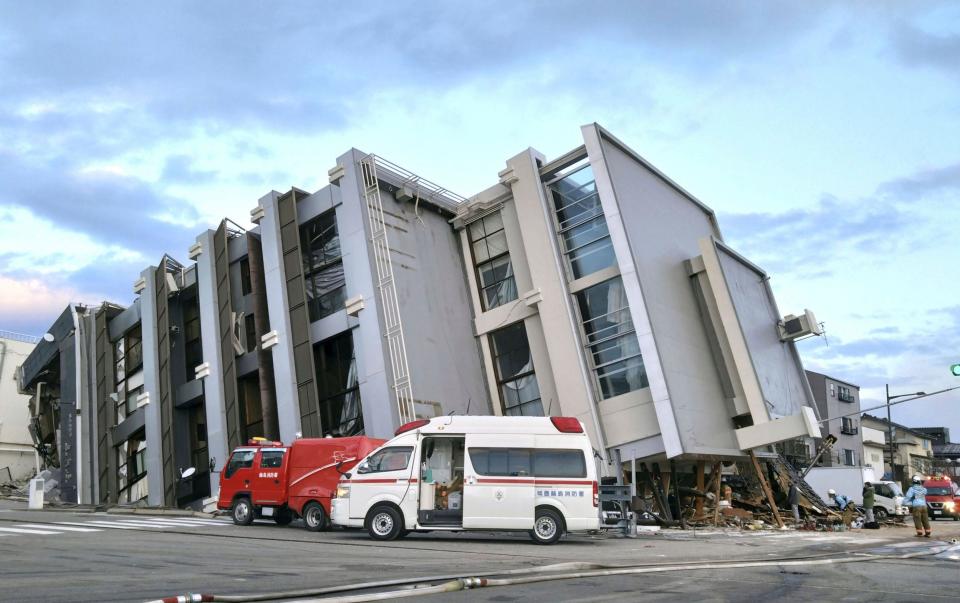
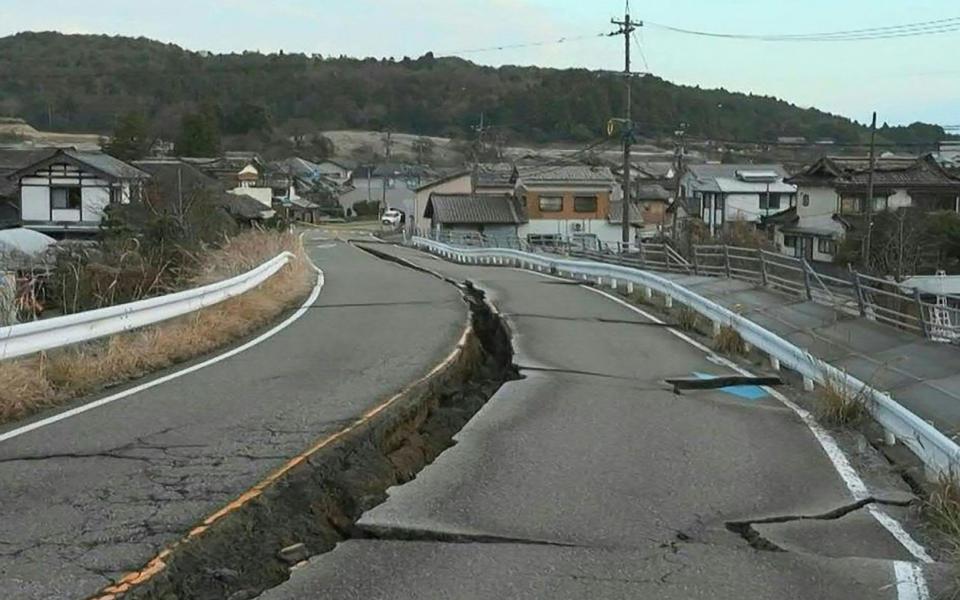
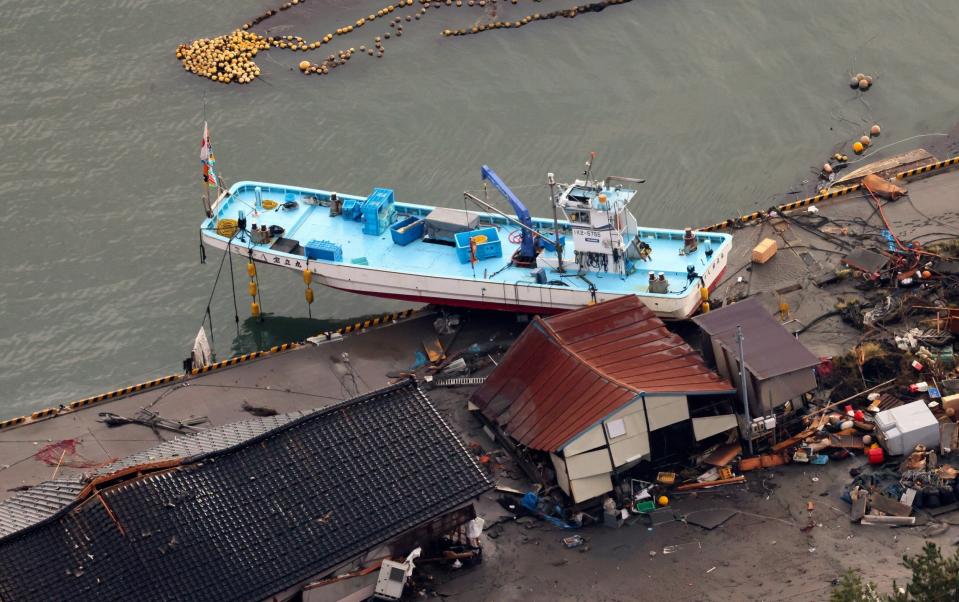
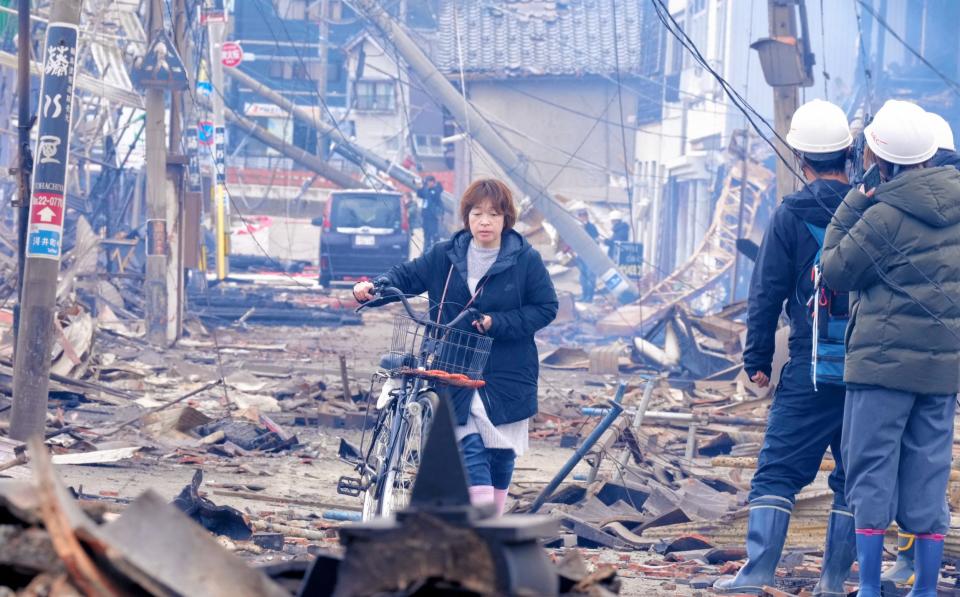
Rescue efforts were also slowed by repeated aftershocks from the earthquake, many of which have been sufficiently powerful to cause additional damage.
According to the Japan Meteorological Agency, there have been more than 130 aftershocks, including four with a magnitude in the upper 5 range.
Many rail services and flights into the area have been suspended. Noto’s airport was closed because of damage to its runway, terminal and access roads, with 500 people stranded inside vehicles in its parking lot, the public broadcaster NHK reported.
The majority of the victims were people who were crushed when older, wooden homes collapsed. Seven bodies have also been discovered within the municipal hospital in the town of Wajima, one of the hardest-hit communities.
A seven-storey apartment complex was toppled across a main road in Wajima, a coastal town about 20 miles west of the epicentre of the quake.
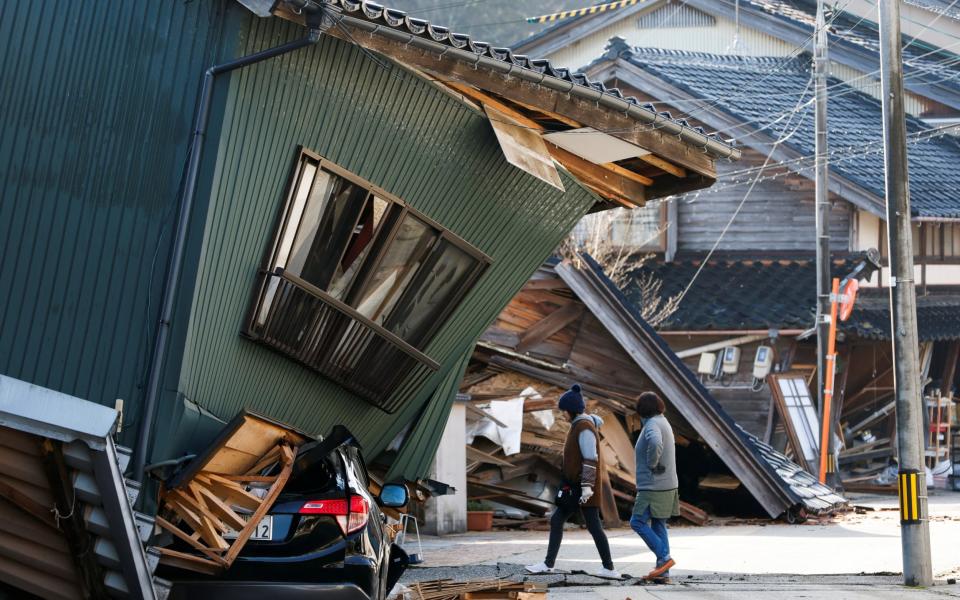
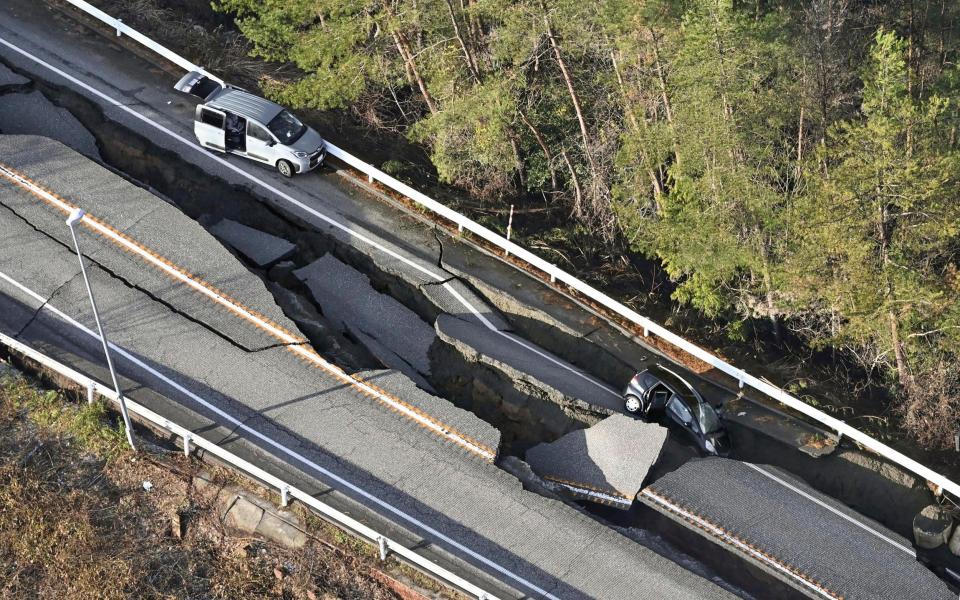
The substantial part of the centre of the town burned to the ground during the night, with police saying at least 200 homes and shops had been destroyed.
Footage taken from helicopters over the town early on Tuesday morning showed smoke still rising from the area and fire crews damping down the smouldering remains of homes. As of Tuesday afternoon, emergency teams are still trying to locate 14 people trapped under rubble in the town.
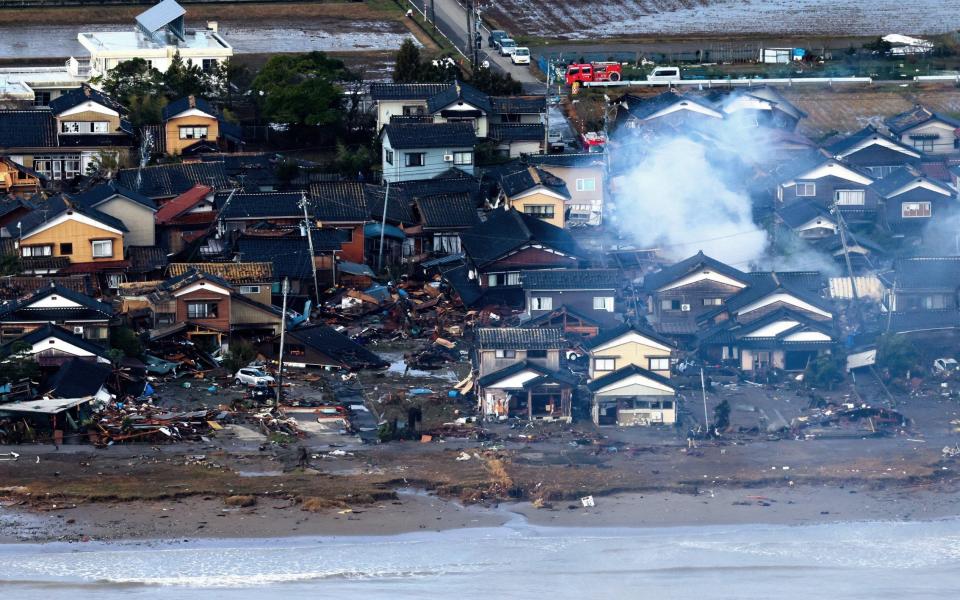
Television footage has also shown the damage caused by the tsunami that was triggered by the tremor, although it was less powerful than authorities had initially feared.
Wajima and a number of other port communities were hit by a tsunami of almost 4ft on Monday evening, significantly lower than the waves of more than 16ft that were predicted immediately after the quake.
Nevertheless, harbour buildings and homes close to the coast have been washed away and many fishing vessels and small boats have either been swept inland or sunk.
More than 50,000 people living in coastal towns were ordered to evacuate inland in the immediate aftermath of the quake.
The alert level has been downgraded but people are still being told to stay away from the coast as there is a high probability of further aftershocks that could cause new tsunami.
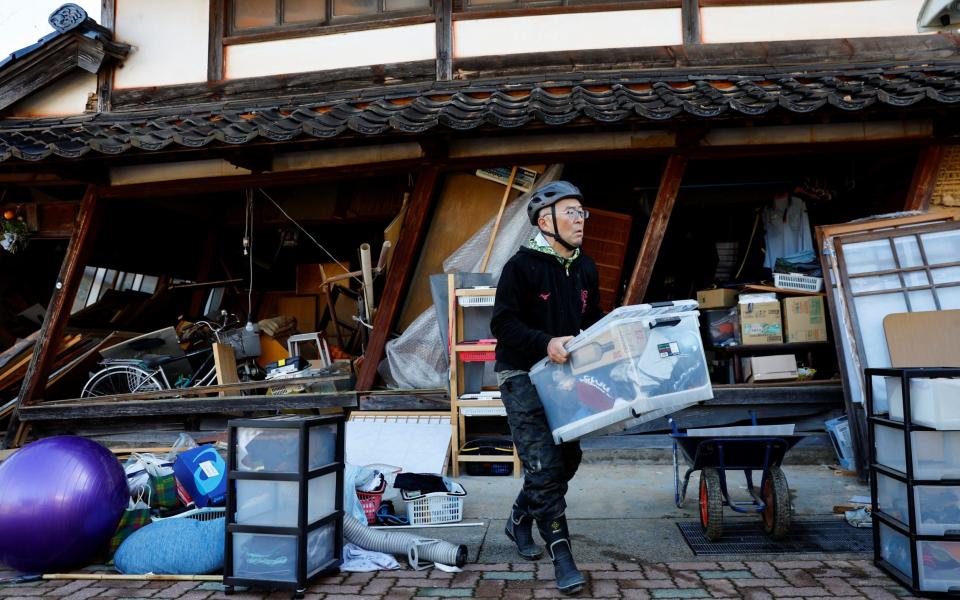
Operators of nuclear power plants along the Sea of Japan coast have been quick to reassure the public that while most reactors are still shut down for safety reviews in the aftermath of the March 2011 earthquake that destroyed the Fukushima nuclear plant, the handful of operational reactors had sustained no damage and there were no reports of abnormalities.
Tokyo Electric Power Company, however, has confirmed that more than three gallons of radioactive water spilled from the fuel pools at two reactors at the Kashiwazaki-Kariwa nuclear plant in Niigata Prefecture, about 90 miles east of the quake’s epicentre.
The company – which was only on Dec 27 granted approval to resume operations at the shut-off plant – said that the water had not leaked outside the reactor building and that it was monitoring radiation levels.
Hokuriku Electric Power Company also confirmed on Tuesday that highly contaminated water spilled from a spent fuel storage pond at the Shika nuclear power plant.

